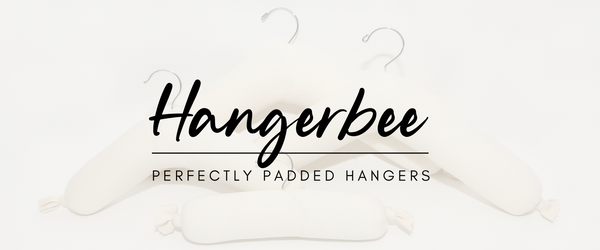
Have you ever wondered:
How should I store clothes at home?
How should I store my off-season clothes?
How can I preserve heirloom garments in my house?
Hangerbee has the answers for you!
Welcome to part one of “Storing Stuff at Home”. If you’re familiar with me, you probably know that I come from the “museum world” and have two decades of experience with artifact and archives preservation. I have worked with well-funded collections, with beautiful climate-controlled and secure storage environments and all the acid-free and lignin-free storage materials I could possibly need…
…I have also worked in sub-par, under-funded facilities, with inadequate IPM (integrated pest management) and minimal storage supplies. Yikes!
Honestly though, I really appreciate having had the opportunity to experience both ends of the spectrum first-hand. These experiences have not only shaped my expectations of how we can protect our collective material culture (aka stuff) in a museum setting, but it also inspired me to open Hangerbee (!), and has greatly shaped how I run my professional workshops and community education classes.
When I teach, I make sure to present the “by the book”, best-practice preservation standards first. Then, we whittle these lofty goal posts down to something that my students are able to achieve in their own homes, with limited time and resources. After all, you are not the V&A.
And from this comes my five standards for a basic storage environment.
An adequate space should be:
Constant
Secure
I tried to think of a good acronym for this but all I came up with was a riff on the ACDC logo. …but without the S for secure.
So let’s start with “Secure” then. What does secure mean in this context? Of course it means that this space should have limited access, whether that means that it’s safe from robbers (!) or perhaps other family members who like to play dress up. The space does not need to be behind glass or locked shut, but it should be out of the way so it won’t be interrupted. The space should also be structurally sound - with no cracks or damage - and be pest-free. The secure space should also be free from excess dirt and debris, but still have adequate air flow.
You might think that a space like this will be tough to find. But for most people, an interior closet on a main or upper level of a finished home should meet this mark. And if pests are making your space insecure, there are plenty of ways to divert them from the area by using a variety of traditional pest control methods. Just make sure that whatever products you use, you are keeping the area free from chemicals that may harm the very things you wish to protect. If you want to dive deep into this subject matter, I recommend visiting https://museumpests.net/.
And if kids playing dress up is the reason your collection is more vulnerable, well, that’s up to you to figure out because I haven’t cracked that case yet. ;)
So that was easy! Come back soon as we discuss the DCDCs environmental standards and how you can easily incorporate them into your home storage plans.


